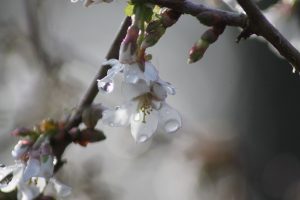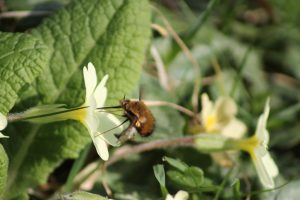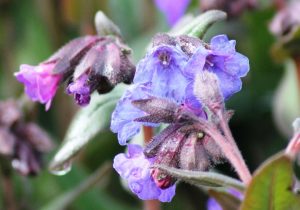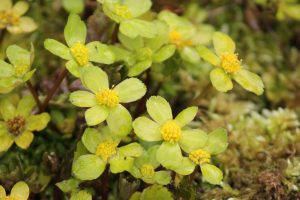By Andy Winfield

Winter has had its grip on us for a what seems like ten months here in Bristol. The temperature has stayed low for the West Country and we’re all looking forward to those early Spring sunshine days and the first warmth on our faces; winter dissolves into the past when that happens. Winter is not without its beauty, but leaving the thermals at home is a marker for warm days ahead. In the Garden plants are keeping to the spring timetable, the light levels prompting early flower.
Prunus incisa, the Fuji cherry is always the first of the blossom. A wonderfully low tree that allows full examination of the delicate flowers, it is named after the volcanic slopes of its native habitat in Japan. The name incisa refers to the small, ridged leaves that emerge after the flowers. While leading spring with its blossom, this tree also leads autumn with its leaf colour; volcanic reds and yellow erupt through the leaves in October.

On the ground Primula vulgaris is appearing all over the place. Such a beautiful sight after the darkness and cold of winter, a pale-yellow unpretentious flower does so much for pollinators and gardeners, appearing no matter what the weather throws at it. The name Primrose derives from old French primerose or ‘first flower’; it’s always been noticed as a forerunner to spring, like a reconnaissance plant. We’ve noticed here in the Garden that this plant is a favourite of the beefly, a fuzzy little flyer and a valuable pollinator, although a parasite of some solitary bees. It will waft its eggs into a bee burrow where they will hatch and feast on the bee larvae; the presence of a bee parasite like the beefly is a good sign of healthy bee populations, so don’t worry if you see one!

Pulmonaria is also flowering, and our particular favourite P.’Blue Ensign’ is the deep blue of the bottom of a tropical sea, and the bees seem to really enjoy it. This plant is known as lungwort; back in the medieval times, people of medicine used to treat patients with plants that looked like the organ that was in trouble. The leaves of Pulmonaria are said to resemble diseased lungs, and so became a treatment for breathing difficulties; this is now established as not a great method for discovering the medicinal properties of plants!

Another little favourite is Hacquetia epipactis, a ground hugging woodland plant from streams and marshes of Eastern Europe. It’s like an alternative daisy with lime green bracts and tiny yellow flowers in the centre. A jaunty plant that always seems to make me smile, regularly returning to greet another year at the same time as usual. This year I wondered whether it would hold off flowering for a week or two, but when the snow melted, there it was, flowering underneath the blanket of ice; it is scheduled to flower now, so that’s what it will do, as it always does in early March.
Spring will continue from now; there’ll be cold bits and pieces of weather, but when the sun pops out, we’ll put our face to it and think of nothing but its warmth.

